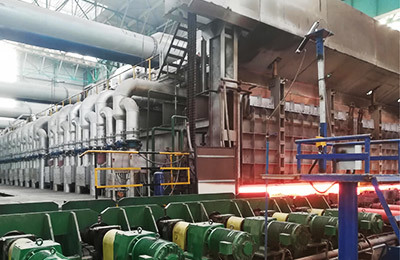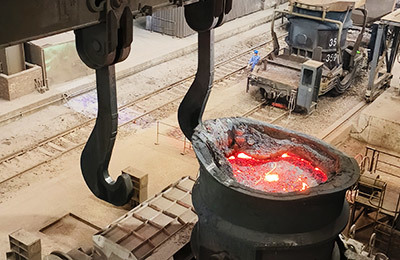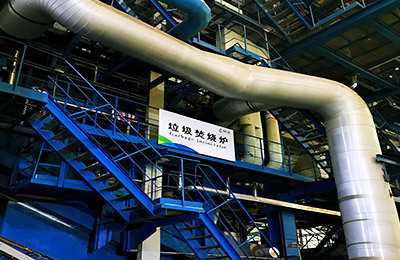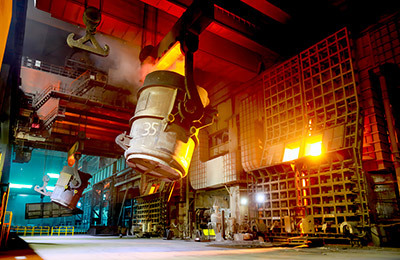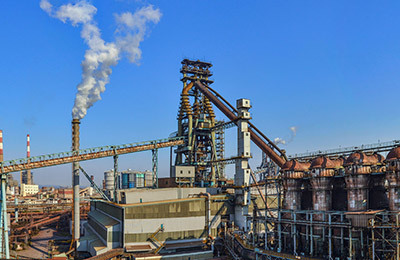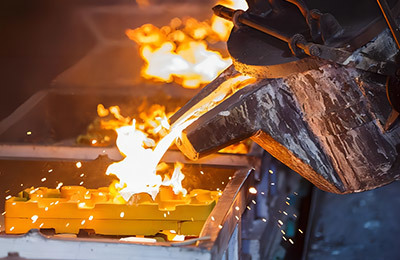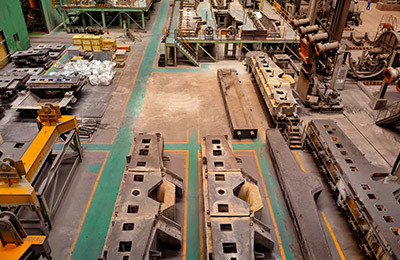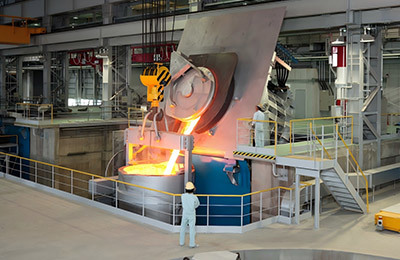2016 China's Top 500 Private Enterprises Released Over 70% to Accelerate Transformation and Upgrading
Release time:
2016-08-29
Author:
Source:
How high is the threshold for entering the top 500 private enterprises? How much are the assets of the top private enterprises in China? In order to achieve healthy and stable development, what efforts have private enterprises made? On the 25th, the 2016 China Top 500 Private Enterprises Conference, sponsored by the All-China Federation of Industry and Commerce and supported by the Ministry of Industry and Information Technology and the State Administration for Industry and Commerce, was held. Huawei Investment Holdings Co., Ltd., Suning Holding Group, and Shandong Weiqiao Venture Group Co., Ltd. ranked among the top three of the 2016 China's top 500 private enterprises. In the past year, the pace of private enterprises entering the world's top 500 has further accelerated. 12 of the top 500 private enterprises have been listed in the world's top 500 list, a net increase of 5 over the previous year, an increase of 71.43 percent.
Against the trend of growth, 2015 after-tax net profit growth of 17%
"From the entry threshold of about 4.5 billion yuan when it was first released, the threshold broke through 10 billion yuan in just five or six years. This can be said to be a sign of private enterprises becoming bigger and stronger and growing in strength." All-China Federation of Industry and Commerce Minister Tan Lin said.
The "2016 China Top 500 Private Enterprises Release Report" shows that in 2015, the entry threshold for the top 500 private enterprises was 10.175 billion yuan, an increase of 7%, and the growth rate increased by 2.76 percentage points year-on-year.
The entry threshold has crossed 10 billion, and the total assets of the top 500 private enterprises have continued to grow rapidly. The report shows that in 2015, the total assets of the top 500 private enterprises were 17300.487 billion yuan, and the average household was 34.601 billion yuan, an increase of 25.16.
In 2015, China's economy faced severe downward pressure. In this context, the top 500 private enterprises have not only achieved rapid growth in enterprise scale, but also improved their profit level. Data show that in 2015, the net profit after tax of the top 500 private enterprises was 697.66 billion yuan, an increase of 17.67.
In this regard, Tan Lin said that the top 500 private enterprises are the leaders and pacesetters in the development of private enterprises. They have unique advantages in terms of innovation ability, capital advantages, and grasp of the market, so their profits are good.
However, Tan Lin also stressed that although the profits of private enterprises are increasing, their profitability is declining, indicating that the market environment is still in a difficult period. According to the data, the net asset margin of the top 500 private companies fell to 4.03 percent from 4.29 percent in 2014, and the return on net assets fell to 13.32 percent from 14.04 percent in 2014.
The industrial structure has been continuously optimized, with more than half of the assets of the three industries.
At present, the tertiary industry has become the largest industry in the national economy. In the industrial structure of the top 500 private enterprises, the secondary industry still occupies the dominant position, but the proportion of the tertiary industry has further increased, and the number of shortlisted enterprises has continued to increase.
The report shows that in 2015, the number of finalists in the top 500 private enterprises was the same as the previous year, and the number of finalists in the second industry declined for four consecutive years, from 380 in 2012 to 357 in 2015. The number of finalists in the tertiary industry has increased for four consecutive years, from 117 in 2012 to 137 in 2015.
At the same time, the total assets of the secondary industry were 8213.963 billion billion yuan, accounting for 47.48, a year-on-year decrease of 6.92 percentage points, and for the first time less than 50%, while the proportion of the assets of the tertiary industry exceeded 50%.
"The top 500 private enterprises are a microcosm of the country's macroeconomic policy adjustments in recent years. In recent years, our industrial structure adjustments have paid more attention to the development of the service industry, which is reflected in the list." Tan Lin said that on the one hand, many companies are invested in strategic emerging industries (Aiji, net worth, information), such as the Internet, logistics, financial services, and some productive service industries; on the other hand, although the manufacturing industry is among the top 500 private enterprises. It accounts for the majority, but it is on a downward trend.
In recent years, the participation of Chinese enterprises in overseas development has been deepening. Li Dongsheng, chairman and CEO of TCL, said: "the general trend of economic globalization is unstoppable. Only by taking the global market as the goal of enterprise development can we get more space."
The report shows that in 2015, the number of overseas investment projects of the top 500 private enterprises continued to grow, from 1061 in 2014 to 1328; the number of new overseas investment projects was 267, an increase of 25.16; the total investment reached 28.8635 billion billion US dollars. The number of overseas investment enterprises in the top 500 private enterprises increased from 117 in 2009 to 201 in 2015.
Zhou Haijiang, vice chairman of the All-China Federation of Industry and Commerce and president of Hongdou Group, believes that overseas development and utilization of local land, labor, environment, raw material resources, and loose import and export policies have bypassed international trade barriers and shared local low-cost dividends. Good benefits have been achieved.
To deal with the economic cold wave, transformation and upgrading into a consensus
In 2015, the impact of the global economic cold wave was also transmitted to the country. Li Dongsheng told reporters: "In the past, the growth of Chinese companies relied more on the advantages of efficiency, speed and cost control. Today, these advantages are no longer enough to support our development."
"Transformation and upgrading is not only the inherent need of enterprise development, but also the requirement of economic and social development to a certain stage." Zhou Haijiang said.
Based on this understanding, the top 500 private enterprises are also advancing the pace of transformation and upgrading with unprecedented intensity.
The report shows that in 2015, 75% of the top 500 private enterprises accelerated their transformation and upgrading, and 11.4 percent of them started their transformation and upgrading. Further analysis shows that among the top 500 private enterprises in 2015, 75.40 percent of the enterprises took the initiative to choose transformation and upgrading in order to become bigger and stronger, and 43.6 percent of the enterprises embarked on the road of transformation and upgrading because of policy support. the support of government policies is also an important reason for private enterprises to speed up the pace of transformation and upgrading.
In addition to strengthening transformation and upgrading, the shaping of corporate brands has also become the consensus of entrepreneurs. "The international market is the division of international brands, and the domestic market is the division of domestic brands and international brands. Therefore, if you want to participate in the division of the market, you must have your own brand." Zhou Haijiang said.
Data show that in 2015, the total number of domestic and foreign trademarks owned by the top 500 private enterprises reached 87510, of which 65358 were domestic trademarks and 22152 were foreign trademarks. In 2015, the average number of trademarks owned by each enterprise was 175, an increase of 21.53.
"This proves from one side that the majority of private enterprises, especially small and medium-sized enterprises, are the source of innovation." Tan Lin said that if enterprises want to survive, they must take the road of innovation. This is the current stage of China's economic development. In the past, the road of imitation or even fake cottages was impassable. There is no room for survival and they can only take the road of innovation.
In the view of Pan Gang, chairman of Yili, the brand depends not only on quantity, but also on quality. "If a brand wants to impress people, it needs to continue to convey a positive and healthy brand concept to people and narrow the distance with consumers."
Entrepreneurs' efforts to build their own brands have paid off handsomely. The report shows that in 2015, the contribution of private brand products to total revenue of the top 500 private enterprises showed positive changes. The number of enterprises with their own trademarks reached 370, an increase of 3.35 percent. Among them, the number of enterprises with private brand products accounting for more than 60 percent of total revenue increased by 9, an increase of 10.47 percent.
Related Blog

